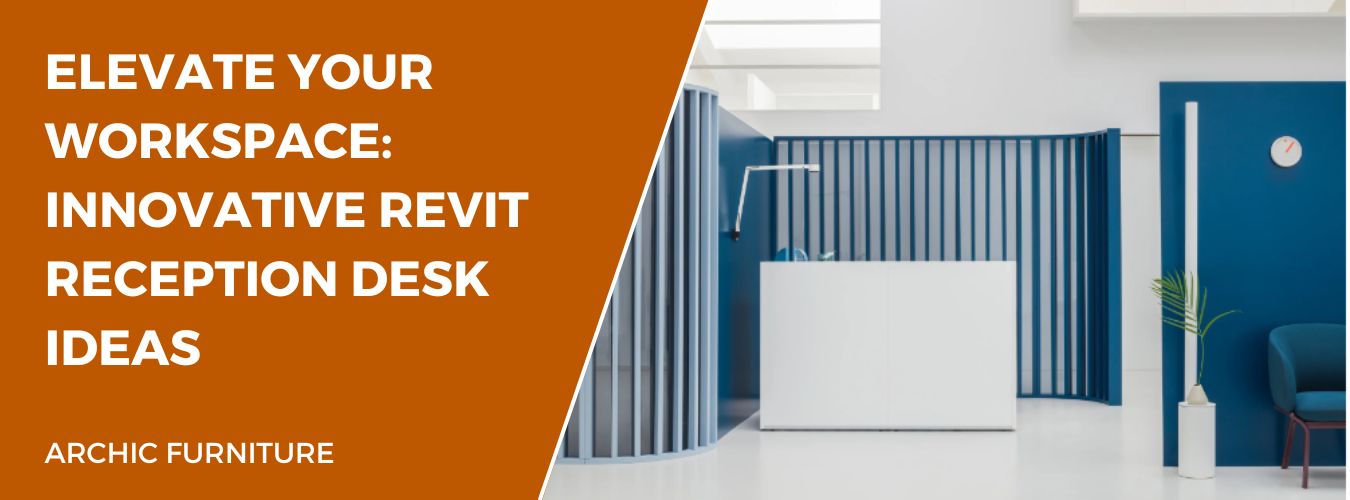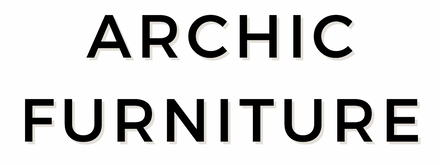

Elevate Your Workspace: Innovative Revit Reception Desk Ideas
Are you looking to design a sleek and functional reception desk in Revit? You're in the right place.
Revit is a powerful tool. Allows designers to create detailed models of reception desks. These models can be tailored to fit any office or commercial space.
It provides the flexibility to customize designs according to specific requirements. Making it an invaluable tool for modern interior design.
Revit simplifies the process of creating complex reception desk designs. Catering to aesthetics and functionality.
Whether you are a seasoned architect or a novice. This software makes it possible to bring your vision to life with precision and detail.
From choosing the right materials to integrating advanced design features. Mastering Revit can elevate the quality of your projects.
You can find customizable reception desk models on platforms. Making it easier to get started on your design journey.
Key Takeaways
- Revit offers extensive tools for designing custom reception desks.
- The software supports detailed modeling for specific requirements.
- Accessible resources and customizable models are available online.
Overview of Revit in Modern Design
Revit plays a crucial role in contemporary design. Emphasizing efficiency and flexibility in creating and managing building projects.
This section explores the importance of reception desks in office spaces. Focusing on how Revit enhances its design and implementation.
Are you ready to revolutionize your modern design process? Look no further than revit reception desk options. With reception desk Revit family available for download. Creating a stunning and functional workspace has never been easier.
Whether you're in need of a round reception desk Revit or a sleek reception table Revit. There's a perfect reception desk Revit model waiting for you. Say goodbye to outdated designs. Hello to cutting-edge style with reception desk Revit file. Utilize Revit family reception desk.
Bring your vision to life and impress clients and colleagues alike. Best of all, many reception desk Revit family free download or reception desk Revit download are available. Making it a cost-effective solution for your design needs. Elevate your workspace today with the power of reception Revit.
Importance of Reception Desks in Office Spaces
Reception desks are essential. Creating a professional and welcoming environment in office spaces. They serve as the first point of contact for visitors, clients, and employees.
A well-designed reception desk helps in forming a positive impression. Facilitates smooth operations.
Revit enables designers to craft intricate and customized reception desk designs. With Revit, architects can visualize the final product, incorporating various materials and configurations.
For instance, a sleek, white reception desk with two workstations. Complete with computers and office chairs, can be designed using Revit. This design detail can be found on the modern reception desk available for download.
Additionally, Revit's functionality allows for easy modifications and adjustments. Architects can alter design elements to meet specific needs or preferences.
This flexibility is essential for creating reception desks. Align with the aesthetic of the office.
By utilizing Revit, designers can ensure that every detail. From dimensions to materials, is represented and adjustable.

Understanding Revit
Revit is a powerful software used in the construction and design industries. It provides tools to create detailed models of buildings and interiors. Revit's features help designers and architects work more.
Understanding reception counter Revit can be a game-changer for designers and architects looking to create stunning reception areas. With features like modern reception desk Revit and curved reception desk Revit. You can bring your vision to life with ease.
The availability of round reception desk Revit file and Revit reception desk download options makes it convenient to access and use different designs. Whether you're looking for a lobby desk Revit or a revit half round reception desk. The various Revit components reception desk allow for customization and creativity.
Take advantage of Revit files reception desk to streamline your design process and create eye-catching reception areas that leave a lasting impression.
What is Revit?
Revit is a Building Information Modeling (BIM) software developed by Autodesk. It allows users to design a building and its components in 3D. Users can also annotate the model with 2D drafting elements. Access building information from the model’s database. Revit is used for architecture, engineering, and construction. Due to its advanced capabilities.
Are you looking to elevate your architectural designs with cutting-edge technology? Look no further than reception desk for Revit. This powerful software allows you to create stunning Revit 3d reception desk download with ease.
Including reception desks that will impress any client. With a simple revit file reception desk download. You can access a wealth of resources to enhance your projects.
Whether you need a reception desk on wheels Revit. Or a modern reception desk in Revit circular. Reception desk in Revit circle has you covered. Say goodbye to outdated models. Hello to sleek, contemporary designs with the help of Revit.
Don't waste time scouring the internet for the perfect reception desk bim model. Simply download it in reception desk Revit free. From reception desk .rfa files to customizable reception desk family Revit.
The possibilities are endless. Elevate your designs. Impress your clients with the ultimate tool for architectural innovation. Say hello to the future of design with modern reception desk Revit family.
Key Features of Revit
3D Modeling: Revit enables users to create detailed 3D models.
BIM Integration: The software provides a comprehensive BIM environment. Allowing for easy collaboration among professionals.
Documentation: Revit includes tools for creating detailed construction documents. Including plans, elevations, and schedules.
Parametric Components: Users can create and change components with a parametric design. This means changes in one part of the model are reflected in other related parts.
Analysis Tools: Revit offers various analysis tools for structural, energy, and material performance.
Benefits of Using Revit for Furniture Design
Accuracy: Revit's precise modeling ensures that furniture fits within the designed space.
Customization: Designers can create and change furniture designs. Adapting to different project requirements.
Collaboration: Revit facilitates better collaboration with architects and engineers. Ensuring that furniture designs integrate with the building design.
Efficiency: With Revit, designers can produce detailed plans. Visualizations, improving project timelines.
Visualization: The software provides high-quality renderings. Helping clients and stakeholders visualize the final product.
Creating a detailed reception desk in Revit blends these elements. Offering a strong toolset for designing functional and pleasing spaces.
Getting Started with Revit
You need to know the system requirements. Gain a basic understanding of the user interface. These elements are crucial to ensure a smooth and productive experience.
Are you ready to take your architectural designs to the next level with Revit? With our modern reception desk Revit download, healthcare reception desk Revit, fn-reception desk Rivet, and fn-admin reception desk Rivet. You have a wide range of options to choose from.
Whether you're looking for a custom reception desk in Revit. A classic reception desk for Revit, a circular reception desk Revit, or a bim curved reception desk Revit.
We have everything you need to create stunning reception areas. Don't forget to explore our artistic reception desk Revit download. A touch of creativity in your design.
To create reception desk Revit may seem daunting. With the right tools and resources at your disposal. You'll be creating amazing designs in no time. Take the first step today.
Begin exploring the endless possibilities that Revit has to offer. Don't be afraid to experiment. Push your creative boundaries. Various reception desk options are available. Dive in and let your imagination run wild!
System Requirements
Before installing Revit, make sure your computer meets the necessary system requirements. A compatible system will ensure smooth operation and prevent crashes.
Minimum Requirements:
Operating System: Windows 10 64-bit
Processor: Single- or Multi-Core Intel, Xeon, or AMD processor with SSE2 technology
Memory: 8 GB RAM
Hard Disk: 30 GB free disk space
Video Display: 1280 x 1024 with true color
Internet: Internet connection for license registration and updates
Recommended Requirements:
Processor: Multi-Core Intel i-Series or AMD equivalent
Memory: 16 GB RAM or more
Additional Storage: SSD for faster performance
Video: DirectX 11 capable graphics card with Shader Model 5 and 4 GB VRAM
Resolution: 1920 x 1080 or higher
Having a well-equipped system can impact your efficiency and productivity while using Revit.
Basic User Interface Overview
Getting familiar with Revit's user interface is the next step. The software's layout includes several key components designed to streamline your workflow.
Main Components:
Ribbon: Located at the top, it organizes tools into tabs and panels.
Project Browser: Found on the left side, it lists views, sheets, and families.
Properties Palette: On the right, showing details of selected elements.
View Window: The central area where the project is displayed.
Status Bar: At the bottom, provides feedback and information about ongoing tasks.
Navigation: The Ribbon changes content based on the selected tab.
The Project Browser helps keep track of different parts of your project.
Right-clicking objects in the View Window opens context menus for more options.
Understanding these basics will help you start creating and managing projects.

Reception Desk Design Basics
Designing a reception desk involves understanding key elements. Maintaining standard dimensions for comfort, and selecting appropriate materials. The following sections provide insight into these aspects. Aid in creating functional and aesthetic reception desks.
Essential Elements of a Reception Desk
A well-designed reception desk should include workstations for staff to manage reception tasks. Features like ample storage for files and supplies help keep the area organized.
Security features such as lockable drawers and privacy panels are crucial. Especially in high-traffic areas.
Accessibility is another important element. The front counter should allow easy interaction for both staff and visitors. Including those with disabilities.
Technology integration is key. Power outlets, data ports, and space for computers and phones should be considered.
Standard Dimensions and Ergonomics
The standard height for a reception desk counter ranges from 28 to 30 inches for the sitting area. And 42 to 46 inches for the standing counter. This accommodates both sitting and standing interactions.
The depth of the desk should be around 24 to 30 inches. Provide enough workspace without overcrowding.
Ensuring at least 60 inches of clear space behind the desk. Allows for free movement and access to storage.
Ergonomics is vital; desks should support natural posture. Adjustable chairs and monitor stands help reduce strain. Consider footrests and an uncluttered space beneath the desk for legroom.
Material Considerations
Selecting materials for the reception desk impacts both function and style.
Wood offers a warm, classic look, while metal and glass provide a modern, sleek appearance. Laminate and veneers can mimic these materials at a lower cost.
Durability is key. High-traffic areas enjoy scratch-resistant surfaces and sturdy construction.
Eco-friendly materials like bamboo or recycled metal support sustainability goals.
Elegant details such as edging and finishes add to the aesthetic. While protective coatings can extend the desk's lifespan.
Lighting integration can enhance visibility and highlight design features. Ensuring the reception desk is both functional and inviting.
Creating a Basic Reception Desk in Revit
Creating a basic reception desk in Revit involves starting a new project. Drawing the desk's shape, and adding details and features. This process is straightforward but requires attention to detail. Ensure accuracy and functionality.
Step-by-Step Guide to Starting a New Project
To begin, open Revit and select "New Project." Choose an appropriate template, such as "Architectural Template." Make sure the units and scales are set.
Next, navigate to the "Level 1 Floor Plan." This is where you will draw the reception desk.
In the "Architecture" tab, click on "Component" and then "Model in Place." Select "Casework" from the options, as this will allow for detailed customization.
After naming the project, you're ready to start. Sketching the basic layout of the reception desk. Keep the project's requirements in mind. Including size, shape, and placement within the space.
This foundation is critical for adding complex features later.
Drawing the Basic Shape
With the project set up, start by outlining the desk. Use the "Create" tab and select "Extrusion." This tool helps in forming a solid shape for the desk. Define the base shape, whether it's rectangular, round, or another design.
Set the height of the extrusion to match the desired height of the desk, around 4 feet. Ensure all proportions are correct. This includes the length and width to ensure it fits within the intended space.
After the basic shape is drawn, refine the edges and corners using the "Modify" tab tools. This will include adjusting lengths and adding curves if necessary.
The basic shape sets the stage for more detailed features. Enhance functionality and aesthetics.
Adding Details and Features
Once the basic shape is complete, it's time to add features. Like drawers, shelves, and surface finishes.
Use the "Void Forms" to cut out areas where drawers and shelves will be placed.
Add materials to the surfaces by selecting the "Materials" parameter. This includes textures and colors that match the design requirements. Options range from wood to metal finishes.
Incorporate extra elements such as grommets for computer cables or decorative panels. These can be added through the "Component" tool and adjusted to fit.
For a modern look, consider using sleek designs. Adding minimalistic handles or decorative strips.
Always ensure that the added features are functional and enhance the desk's usability.
Advanced Design Techniques
Advanced design techniques for reception desks in Revit. It can enhance the functionality and aesthetics of your projects. These techniques include the effective use of families and components. Thoughtful application of materials and textures, and detailed customization of design elements.
Using Families and Components
Families in Revit allow for consistent use of standard design elements.
Using parametric families can help in creating customizable desk elements.
For example, a corner laminate reception desk can be combined with other components. Create various configurations, enhancing design flexibility.
Utilizing families ensures that each piece fits in your design. Facilitating seamless integration and modifications.
Components also save time by allowing existing model elements to be reused. Thereby speeding up the design process and ensuring accuracy.
By incorporating common features. Such as curved and chamfered corners or built-in wire chases. Designers can improve both aesthetics and functionality. Making the workspace efficient and appealing.
Applying Materials and Textures
Applying the right materials and textures is critical. Achieving the desired look and feel of a reception desk.
Revit provides tools to apply realistic finishes and materials. Such as wood, laminate, and glass.
For instance, using a slick, white finish as seen in a modern reception desk. It can give the desk a contemporary appearance.
Materials can be customized by adjusting settings. Such as reflectivity, transparency, and texture mapping.
Using high-quality textures not only enhances the visual appeal. But also helps in creating renderings that match the intended final product.
Experiment with different materials to see how they interact with light. Surrounding elements can elevate the design.
Customizing Design Elements
Customization is key to a unique and functional reception desk design.
Revit allows designers to tweak specific elements. Such as desk height, storage solutions, and branding features.
For example, desks like those on Bimstore offer options for translucent branding. LED skirting which can be tailored to meet specific client needs.
Custom elements such as sign-in platforms, and storage units. Accessibility features are also crucial.
These additions not only enhance the utility of the reception desk. But also ensure compliance with standards such as the DDA (Disability Discrimination Act).
Troubleshooting Common Issues
Using Revit for designing reception desks may come with some challenges.
Common trouble areas include design errors, software bugs, and inefficient workflows. The following sections provide solutions and tips to address these issues.
Solving Design Errors
Design errors can disrupt project timelines.
Checking for alignment issues, inappropriate dimensions, and unrealistic layouts is essential.
Use the grid and snap tools in Revit to ensure that components are placed. These tools help align objects.
Review your design. Catching errors early can save time later.
Use the family templates provided by Revit City to access pre-designed elements. It can cut the chances of mistakes.
Team collaboration is also crucial. Share your Revit file with team members to get many sets of eyes on the design. This way, errors can be identified and fixed.
Dealing with Software Bugs
Software bugs can be frustrating and disrupt workflow.
One common issue in Revit involves corrupt files. To fix this, back up your work and use Revit's Audit feature to check for file problems.
Another issue is the application's slowness, which can be resolved. Optimizing your computer’s hardware and clearing temporary files.
Keeping Revit updated is also necessary. Updates often include bug fixes and performance improvements. Checking for updates. It can help avoid common issues that others may have encountered.
Tips for Efficient Workflows
Efficiency is key in any design project.
Start by organizing your workspace. This includes setting up toolbars and shortcuts for easy access.
Use templates and pre-built models, such as modern reception desks, to speed up the process.
Implementing a modular approach can also be beneficial.
Breaking down large projects into smaller sections allows for better manageability.
Using BIM (Building Information Modeling) objects. It can make the design process quicker and more efficient.
Finally, invest time in learning and training.
Short tutorials and Revit forums can provide valuable tips and tricks.
This will help you become more proficient and efficient in using the software. Streamlining your workflow.

Reception Desk Design in Revit versus Pre-Made Reception Desk Brands
Choosing between designing a reception desk in Revit. Opting for a pre-made reception desk brand. It involves important considerations related to customization, ease of use, and flexibility.
MDD
MDD offers pre-made reception desks that are known for their modern and sleek designs.
MDD's desks often feature easy-to-assemble modular components, providing a ready-to-use solution.
The desks come in various sizes and shapes, including L-shaped and U-shaped configurations. This makes them suitable for different office layouts.
MDD's designs come with built-in features. Such as storage units, LED lighting, and DDA compliance options.
This one-stop-shop approach saves time and ensures the compatibility of all parts. MDD is a preferred choice for businesses seeking stylish. Pre-configured options without the need for extensive design efforts.
Reception Counter Solutions
Those needing tailor-made desks with unique features might find Revit-based design more suitable. Pre-made options from brands like Reception Counter Solutions could be ideal. For those seeking convenience and rapid deployment. Both options have their distinctive benefits depending on the project's requirements.
Using Revit for reception desk design unlocks a high level of customization.
Revit allows precise control over every aspect of the desk's layout. From dimensions to material finishes.
This flexibility is ideal for firms needing a unique and branded look.
In Revit, designers can integrate detailed features. Such as specific storage solutions, customizable workstations, and tailored finishes.
Designers have the advantage of visualizing the desk in their office’s actual layout. Thanks to Revit's powerful rendering capabilities.
This approach is favored by those who have specific needs. And want a custom-built solution that fits their space.
Keeping Up with Trends
Staying updated with current trends in reception desk design. Future directions in Revit and furniture design. It can impact the functionality and aesthetics of a space.
Latest Trends in Reception Desk Design
Modern reception desks now emphasize clean lines and simplicity.
Many designs feature sleek, white surfaces.
There is also a growing preference for curved shapes.
Material choices are shifting towards eco-friendly options. Such as recycled wood and sustainable laminate.
Designers are also integrating technology. Including built-in cable management systems, which keep spaces tidy and functional.
Future Directions in Revit and Furniture Design
Revit's potential in furniture design continues to grow. Enhanced features that allow for more detailed modeling.
Future designs will likely include more customizable options.
For instance, Revit models like those from the BIM objects library. Provide users with various configurations to suit specific needs.
Revit's integration with other software platforms. Such as SketchUp and Vectorworks, are expected to improve.
This makes it easier to create complex and interactive designs. Promoting a collaborative approach between architects and interior designers.
Conclusion
Using Revit for reception desk design enhances workflow and precision.
Revit offers robust tools for customization. Allowing designers to create unique reception desks that fit specific needs.
The software supports various formats and collaboration among teams, streamlining the design process.
Benefits:
Customization: Tailor reception desks to exact requirements.
Collaboration: Work with other team members.
Accuracy: Achieve precise measurements and details.
Frequently Asked Questions
How can I make my reception desk design ADA-compliant?
To follow the ADA, ensure reception desks have the appropriate height for accessibility.
The counter should be no higher than 34 inches from the floor for accessible service.
Include a clear floor space of 30 by 48 inches in front of the desk. This allows for wheelchair access.
Consider fitting protruding objects, like supported desks. No more than 4 inches into pathways.
How can I customize Revit families for my design needs?
Customizing Revit families can tailor designs to specific requirements.
Use the Family Editor in Revit to change existing families or create new ones.
You can swap out materials, dimensions, or even shapes within a family.
Check out RevitCity for various Revit families. It can serve as a starting point for customization.
Combining straight and curved desks or adding unique features is possible. Learn more tips on creating engaging reception counters.
What resources are available for learning advanced Revit techniques?
Online resources can help you learn advanced Revit techniques. Websites like BIMobject offer downloadable BIM objects and tutorials.
Forums such as Revit Forum discuss complex issues. Share solutions from experienced users.
Many online courses and video tutorials provide step-by-step instructions on mastering Revit.
If you are still on the fence and not sure what to purchase, reach out to us, we recommend connecting with one of our furniture experts who would be delighted to help you find the perfect reception desk Revit for you. You can reach out to us at:
Call/Text: (916) 262-7257. or;
Email: support@archicfurniture.com
We would be more than happy to help you find the perfect reception desk for your needs!




